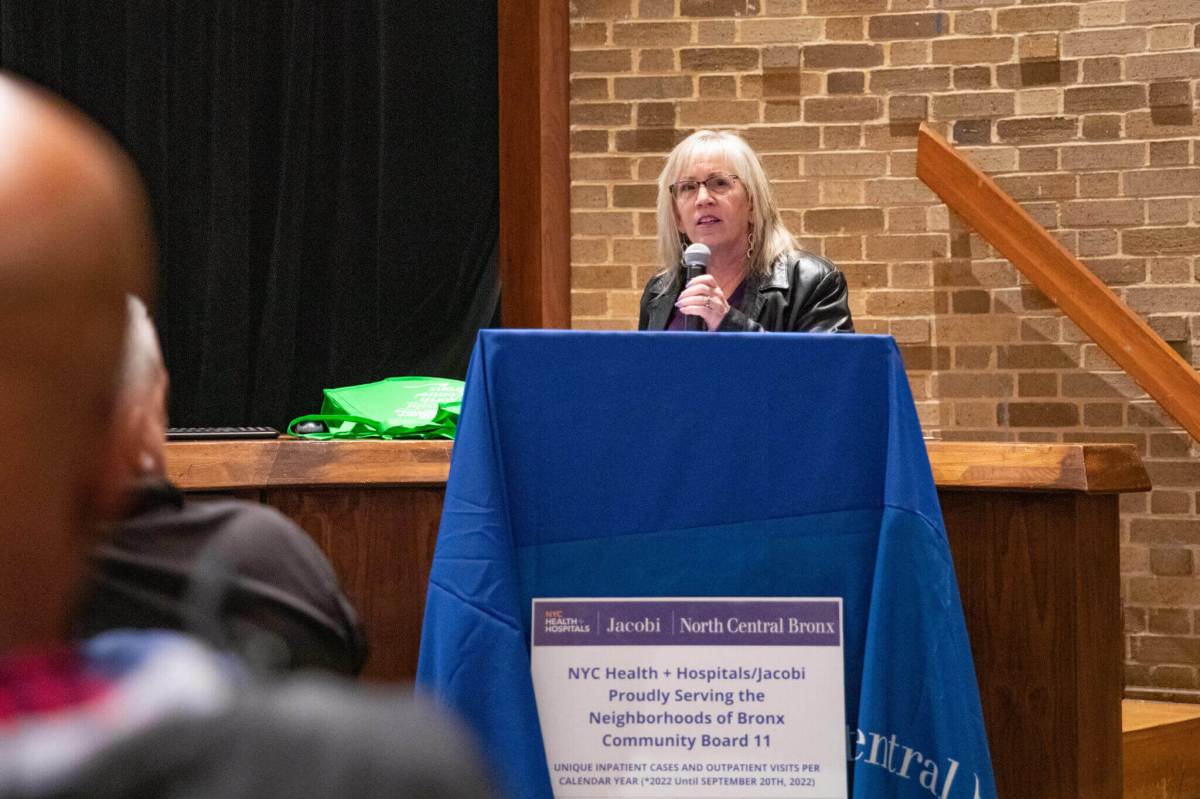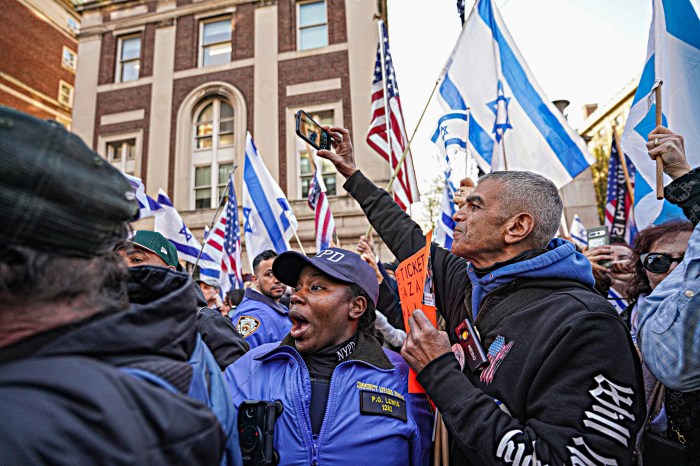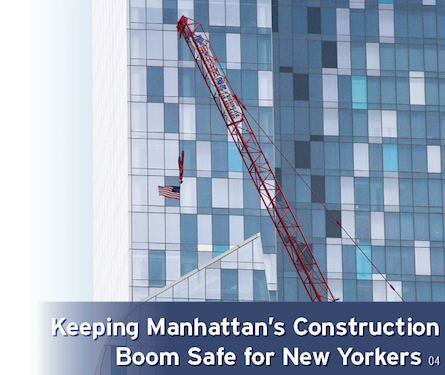
BY JACKSON CHEN | As Manhattan picks up the pieces from a deadly crane collapse in Tribeca, the incident has sent shockwaves of concern throughout the borough.
On February 5, a massive crawler crane toppled onto Worth Street between Hudson and Church Streets, scraping along four buildings before crushing David Wichs, a 38-year-old Upper West Sider. In addition to Wichs’ death, three other people suffered injuries from the debris that fell off the buildings hit by the crane.
Two days after the incident, Mayor Bill de Blasio issued citywide regulations regarding crane safety that called for more enforcement aimed at the machines’ operators and harsher penalties for the disobedient.
According to de Blasio’s four-point plan, crawler cranes — like the one that toppled in Tribeca –– that move short distances with their caterpillar tracks will have to stop work and go into “safety mode” whenever steady winds exceed 20 miles per hour or when gusts exceed 30 miles per hour.
Making sure contractors abide by this new restriction until further notice, the city’s Department of Buildings plans to increase fines to at least $10,000 — up from a minimum of $4,800 — on any operator who fails to comply by safeguarding their crane equipment.
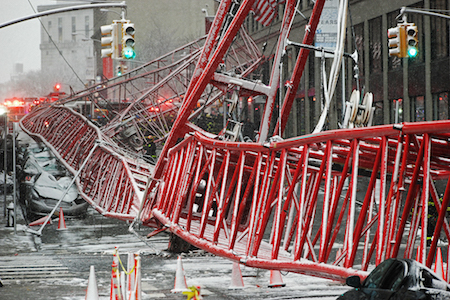
The mayor’s regulations also called for several city agencies to increase enforcement of the various sidewalk and street closure regulations related to crane activity. The Department of Buildings will conduct inspections and issue violations accordingly if flaggers fail to prevent people from crossing into work zones.
The new crane rules also detailed a requirement that operators give proper notice to surrounding residents and businesses whenever they move a crane, where they previously only needed to notify nearby people when the crane was first installed.
Lastly, the city wants to prevent any future incidents by creating a task force charged with evaluating the Worth Street incident and proposing best practices for the city going forward.
While the city continues its investigation into the crane collapse, tremors from the incident quickly reached the Upper West Side –– as residents and officials mourned Wichs’ death and also called for better safety regulations.

“Our Upper West Side community has been left reeling after learning that one of our own lost his life as a result of the crane collapse in Lower Manhattan,” City Councilmember Helen Rosenthal said in a February 6 written release. “Though no words could ever hope to make David Wichs’ family whole again, all of our hearts are with them as they grapple with their tragic loss.”
Wichs, who was born in Prague, came to the US at 14, and later graduated from Harvard where he earned a reputation as a math whiz, was remembered at a February 7 funeral at Congregation Kehilath Jeshurun on East 85th Street before burial in Saddle Brook, New Jersey.
 Rosenthal’s statement continued, “Given the increase in construction here on the Upper West Side and across the city, it is critical that the New York City Department of Buildings does everything in its power to ensure the safety of all New Yorkers. In light of the apparent increase in construction-related deaths and injuries in recent months, the city must do more to secure construction sites and protect building workers and passersby alike. I call upon the city to make the results of the multiagency task force available to the public and to take swift action to reform any procedures that could have contributed to this tragedy.”
Rosenthal’s statement continued, “Given the increase in construction here on the Upper West Side and across the city, it is critical that the New York City Department of Buildings does everything in its power to ensure the safety of all New Yorkers. In light of the apparent increase in construction-related deaths and injuries in recent months, the city must do more to secure construction sites and protect building workers and passersby alike. I call upon the city to make the results of the multiagency task force available to the public and to take swift action to reform any procedures that could have contributed to this tragedy.”
Rosenthal’s West Side colleague Mark Levine told Manhattan Express, “While accidents like the most recent crane collapse are extremely rare, it’s understandable why this tragedy underscores many concerns people have about construction safety in New York City.”
Levine, who is the main sponsor of Intro 420, a pending measure that would place limits on construction near schools, said he plans to continuing pushing that bill, but he also commended the new regulations de Blasio announced.
“As New York City embarks on a building boom, I believe the mayor’s new proposals offer a much needed step in the right direction,” Levine said. “With new construction projects occurring throughout the five boroughs, safety for workers on site and for residents in surrounding neighborhoods should never become expendable.”
Across Central Park on the Upper East Side, the rapid pace of new construction is never from far residents’ attention.
Echoing Levine, Councilmember Ben Kallos said the city is currently experiencing a construction boom, similar he said to the pre-recession one he witnessed while working as chief of staff to former East Side State Assemblymember Jonathan Bing.
In 2008, two crane collapses on the Upper East Side happened less than three months apart. According to Department of Buildings accident records, an incident on March 15 of that year left seven people dead and 22 injured after a tower crane collapsed at 303 East 51st Street. Shortly afterwards, on May 30, another crane collapsed at 335 East 91st Street, leaving two dead and one injured.
“The last time we were in a construction boom, we saw a similar level of accidents,” Kallos said. “In both cases, we’ve seen lives lost. I wish we could learn from some of our mistakes.”
While the councilmember praised the mayor for focusing on the issue now, Kallos said he’s been working on stricter regulations for construction sites since April 2014 when he proposed Intro 299, also known as the Construction Safety Act.
Under the bill, workers seeking hoisting machine operator licenses would be required to have qualifying experience in New York City and complete specific examinations administered by the city’s Department of Buildings, instead of other accredited organizations.
Kallos said while the industry is moving toward having a national standard of construction safety, New York’s landscape is unique and should have operators with distinct experience within the city.
“The key piece is to make sure the folks have training, make sure they’re certified, and make sure their training is local to New York City,” he said.
In calling for more safety regulations, Kallos said he wants something similar to de Blasio’s Vision Zero for preventing construction accidents.
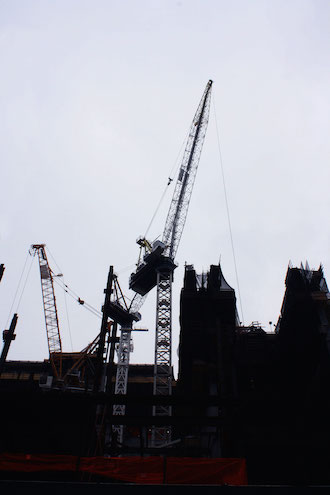
While there have been no recent crane accidents on the Upper East Side, there were three serious crane-related accidents throughout the borough in the two years leading up to last week’s Tribeca tragedy.
According to the DOB’s accident database, a construction worker was injured when a spider crane on the roof of 353 Spring Street tipped over on February 7, 2014.
More than a year later, on May 31, 2015, city records show, seven people were injured when a crane dropped an air conditioning unit after trying to hoist it to the roof of 261 Madison Avenue between 38th and 39th Street. A Daily News story on that incident pegged the number of injuries at 10, three more than the DOB reported.
Less than a week later, on June 2, a construction worker was injured during the installation of a tower crane at 41 East 22nd Street, according to accident reports.
However, it’s only with the most recent incident that the city is now taking steps to reform construction safety. The de Blasio administration is continuing its investigation into the most recent crane collapse, including a forensic examination of the equipment, and the mayor ordered that the DOB inspect all crawler cranes throughout the city before putting them back to work.
“No building is worth a person’s life,” de Blasio said. “We are going to ensure the record boom in construction and growth does not come at the expense of safety.”











